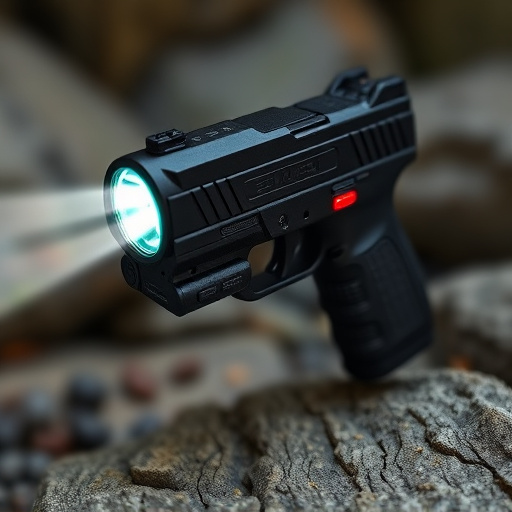The increasing popularity of concealed stun guns has sparked a need for advanced detection methods, as traditional security tools struggle with non-metallic designs. Multiguard stun guns represent a breakthrough, incorporating radar and infrared sensors to offer more accurate identification. While current solutions face challenges like high false positives, future developments aim to integrate AI, machine learning, and discreet wearable tech to enhance detection efficiency without compromising privacy.
“As security concerns rise, the detection of concealed stun guns becomes an increasingly critical aspect of public safety. This article delves into the intricate world of stun gun detection technology, focusing on the challenges posed by Multiguard Stun Guns. We explore current detection methods and their limitations, while also scrutinizing potential solutions to enhance security measures.
The journey ahead promises innovative advancements, aiming to keep pace with evolving threats, ensuring safer communities.”
- Understanding Concealed Stun Gun Detection: The Multiguard Stun Gun Challenge
- Current Technologies and Their Limitations in Detecting Hidden Stun Guns
- Potential Solutions and Future Prospects for Advanced Stun Gun Detection Systems
Understanding Concealed Stun Gun Detection: The Multiguard Stun Gun Challenge
The challenge of concealed stun gun detection lies in balancing security and privacy. In today’s world, where personal safety is a top priority, individuals often opt for self-defense tools like stun guns to protect themselves from potential threats. However, the rise in popularity of concealed carry weapons has sparked concerns about how to identify them effectively without infringing on personal freedoms. This is where the Multiguard Stun Gun comes into play as a game-changer.
Multiguard Stun Guns are designed with advanced technology that makes them harder to detect than traditional stun devices. They employ innovative techniques, such as advanced materials and electronic shielding, to reduce their signature and prevent easy identification by metal detectors or other conventional scanning methods. This subtle yet powerful feature presents a significant challenge for security personnel, forcing them to adapt and adopt new strategies in order to effectively screen individuals carrying these concealed defense tools while respecting the right to self-defense.
Current Technologies and Their Limitations in Detecting Hidden Stun Guns
Current technologies employed for hidden stun gun detection face significant challenges and limitations. Traditional metal detectors, while effective against metallic objects, struggle to identify non-metallic components often found in modern stun guns, such as those made with plastic or composite materials. These devices also cannot differentiate between a stun gun and everyday objects like keys or coins, leading to high false positive rates.
Moreover, thermal imaging cameras detect heat signatures but can be misleading if the user is not trained to interpret them accurately. They may not always pinpoint the exact location of a concealed stun gun due to factors like temperature variations in the environment or the user’s body heat. Advanced technologies like multiguard stun gun detection systems are emerging, integrating multiple sensor modalities (e.g., radar, infrared) to overcome these limitations. However, they remain relatively expensive and require specialized training for optimal performance.
Potential Solutions and Future Prospects for Advanced Stun Gun Detection Systems
With the evolving nature of stun gun technology, potential solutions lie in the development of advanced detection systems that can keep pace with these innovations. One promising approach is the integration of multiguard stun gun detection technologies. These systems employ a combination of sensors, including metal detectors and chemical/biological sensors, to identify not only the presence but also the specific type of stun device used. By analyzing the unique signatures of different stun guns, these advanced systems can provide more accurate and timely warnings.
Looking ahead, future prospects for stun gun detection systems include the incorporation of artificial intelligence (AI) and machine learning algorithms. These technologies can continuously learn from data gathered from various sources, including real-time user inputs and environmental sensors, to improve detection accuracy and responsiveness. Additionally, the development of non-intrusive and wearable detection devices could make stun gun identification more accessible and discreet, ensuring public safety without compromising personal privacy.
The detection of concealed stun guns presents a complex challenge, as highlighted by the Multiguard Stun Gun scenario. While current technologies have made strides, their limitations underscore the need for advanced systems. By combining innovative techniques and materials, future prospects for stun gun detection promise to revolutionize safety in public spaces. Continuous research and development, focusing on enhancing sensitivity, accuracy, and privacy, are essential steps towards addressing this growing concern.
